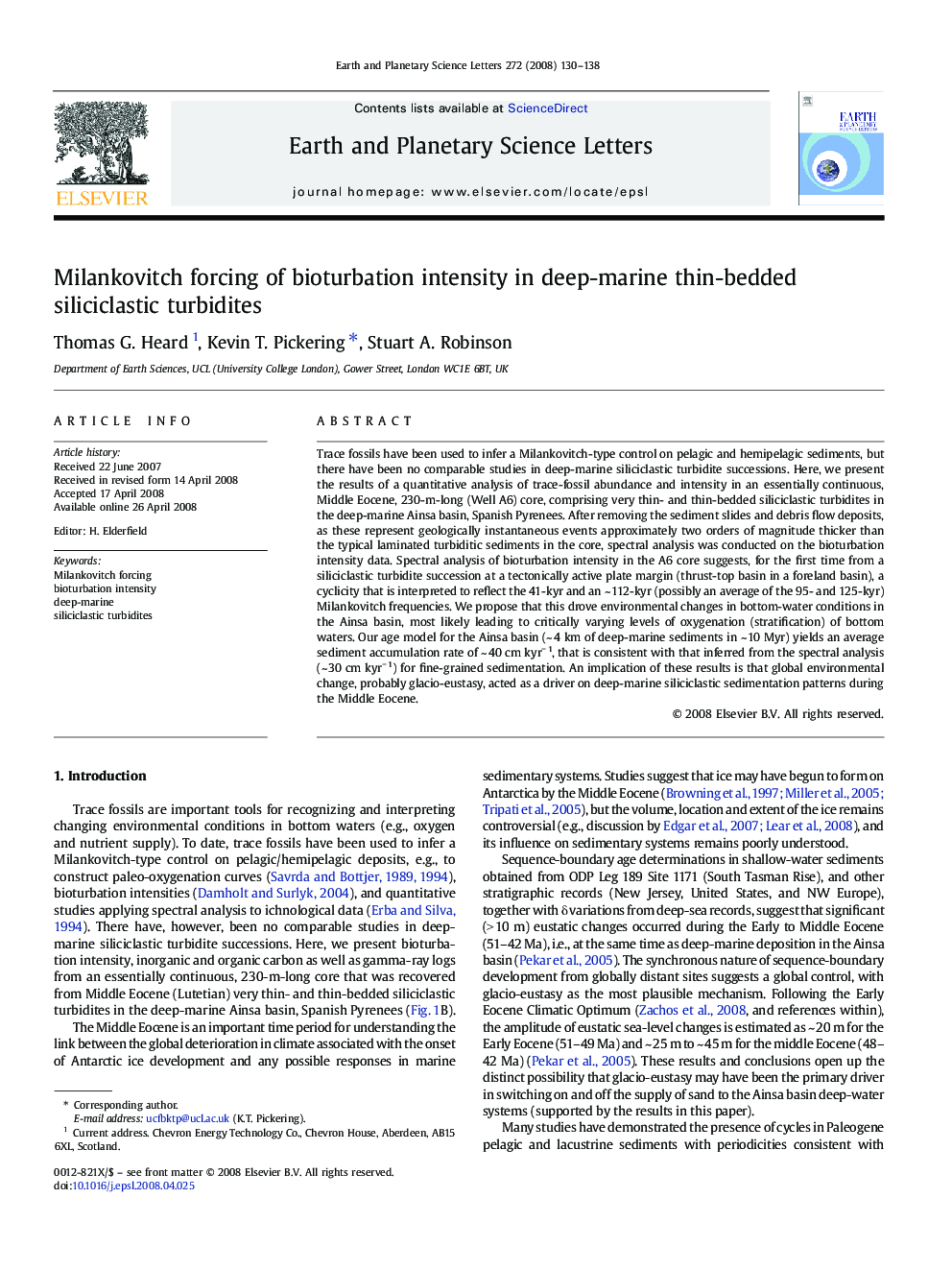| کد مقاله | کد نشریه | سال انتشار | مقاله انگلیسی | نسخه تمام متن |
|---|---|---|---|---|
| 4679690 | 1634892 | 2008 | 9 صفحه PDF | دانلود رایگان |

Trace fossils have been used to infer a Milankovitch-type control on pelagic and hemipelagic sediments, but there have been no comparable studies in deep-marine siliciclastic turbidite successions. Here, we present the results of a quantitative analysis of trace-fossil abundance and intensity in an essentially continuous, Middle Eocene, 230-m-long (Well A6) core, comprising very thin- and thin-bedded siliciclastic turbidites in the deep-marine Ainsa basin, Spanish Pyrenees. After removing the sediment slides and debris flow deposits, as these represent geologically instantaneous events approximately two orders of magnitude thicker than the typical laminated turbiditic sediments in the core, spectral analysis was conducted on the bioturbation intensity data. Spectral analysis of bioturbation intensity in the A6 core suggests, for the first time from a siliciclastic turbidite succession at a tectonically active plate margin (thrust-top basin in a foreland basin), a cyclicity that is interpreted to reflect the 41-kyr and an ~ 112-kyr (possibly an average of the 95- and 125-kyr) Milankovitch frequencies. We propose that this drove environmental changes in bottom-water conditions in the Ainsa basin, most likely leading to critically varying levels of oxygenation (stratification) of bottom waters. Our age model for the Ainsa basin (~ 4 km of deep-marine sediments in ~ 10 Myr) yields an average sediment accumulation rate of ~ 40 cm kyr− 1, that is consistent with that inferred from the spectral analysis (~ 30 cm kyr− 1) for fine-grained sedimentation. An implication of these results is that global environmental change, probably glacio-eustasy, acted as a driver on deep-marine siliciclastic sedimentation patterns during the Middle Eocene.
Journal: Earth and Planetary Science Letters - Volume 272, Issues 1–2, 30 July 2008, Pages 130–138